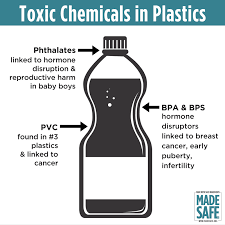From an Article by Olivia Murray, Morgantown Dominion Post, April 11, 2021
PHOTO in ARTICLE — Just as plastic waste fills our oceans and landfills with pollutants, it can have the same effect on bodies — ours and other living creatures’.
According to West Virginia University professor Michael McCawley, the insidiousness of plastic lies largely within. Because just as plastic waste fills our oceans and landfills with pollutants, it can have the same effect on bodies — ours and other living creatures’. And, there is no perfect way to rid ourselves, or our planet, of plastic once it’s there.
McCawley, a clinical associate professor with WVU’s Department of Occupational and Environmental Health Sciences, explained the science behind why plastic’s breakdown can cause problems. He said plastics can take only a few months to be broken down into microplastics, which are easily scattered, but can take thousands of years to fully degrade into chemical compounds.
McCawley said as plastic breaks down, it releases chemicals and reacts with living things in harmful ways. Some of the hydrogen and carbon compounds found in plastic make up carcinogens, which he described as “chemicals that cause cancer.”
“Otherwise, they can cause all sorts of other problems in the body. They can interfere with the normal chemical function of the cell in the body, and that will cause something that’s known as inflammation, and inflammation is that reaction that a cell has to something that irritates it,” McCawley said.
He said inflammation can lead to other health issues, including the majority of chronic diseases, such as arthritis and Alzheimer’s disease, as well as heart problems.
“If [plastic] gets into the environment, whether it be aquatic or the terrestrial environment, you have all sorts of living things exposed to it and potentially undergoing changes. It can be some very toxic kinds of things. Plastic just seems benign … but in fact it has the possibility, as it starts to break down, of undergoing chemical change,” McCawley said.
Rachael Hood, a master’s student in the WVU geography department and a WVU campus organizer for the Post-Landfill Action Network, agreed. She said some known effects of plastic production and leaching have been linked to cancer and reproductive health issues in humans.
“Because plastics have really increased exponentially, it’s unclear what the long-term health consequences are of consuming plastics. One can assume that they’re not great, but it’s scary to think about these unknown consequences of plastics, which are so ubiquitous in our lives,” Hood said.
PHOTO in ARTICLE — Plastic garbage mixes with other debris behind the Morgantown Lock and Dam along Don Knotts Boulevard.
Microplastics are present in seawater, which means they are also found in sea life, and can end up in human bodies through consumption of seafood.
Microplastics aren’t the only waste found in the ocean, however. There is a mass of solid waste roughly twice the size of Texas floating in the Pacific Ocean, and that makes up only a fraction of the plastic waste found in water or discarded as litter.
“The plastic waste input … is about 8 million tons of plastic, going into just the ocean, and there’s about 270 million metric tons of total plastic waste being produced annually,” McCawley said.
And the Sierra Club says nearly eight million metric tons of plastic finds its way into the oceans every year — “the equivalent of a garbage truck full of plastic being dumped into the ocean every single minute, every day of the year. There are 500 times more pieces of plastic in the ocean than there are stars in our galaxy.”
McCawley said recycling is not an easy process, as polymers — material included in the composition of plastics — are not “infinitely” recyclable; over time, they lose the ability to be recycled or reformed into new products. “Eventually, it becomes waste, and that’s the difficulty in doing recycling, particularly for plastics,” McCawley said.
Though he said recycling is still a preferable alternative to immediately creating large accumulations of waste in landfills, McCawley said products we make must be created with recycling in mind in order for the process to be successful — otherwise, even products that were intended to be recyclable eventually end up in a landfill.
McCawley recommended the questions: “Do we need this? Do we have to have that product?” be asked in regard to plastic products.Questioning the necessity of a plastic product can reduce plastic usage in the first place, thereby reducing the amount of plastic waste.
“It’s a complex problem that we don’t have a perfect solution for, and that everybody is still working for,” McCawley said.
Coming this Month in the Morgantown Dominion Post:
April 18: Morgantown and Mon County officials talk about limiting waste by reducing, reusing and recycling in city and county offices and facilities; and a look at what some area businesses are doing to be more environmentally friendly.
April 25: What WVU does to reduce, reuse and recycle on campus; and WVU students talk about how they do the same.

